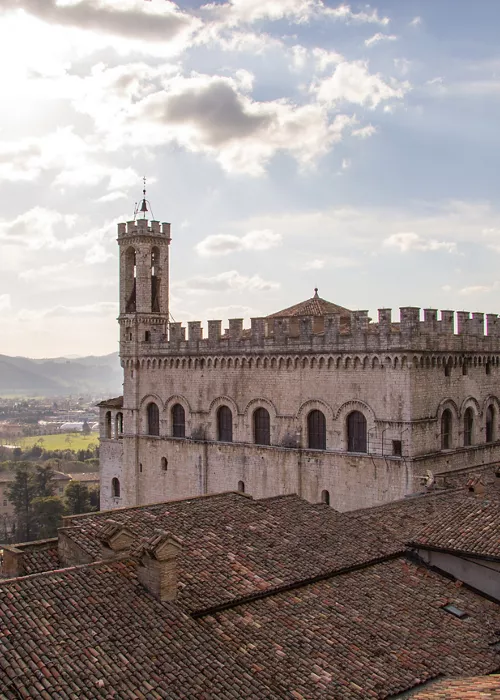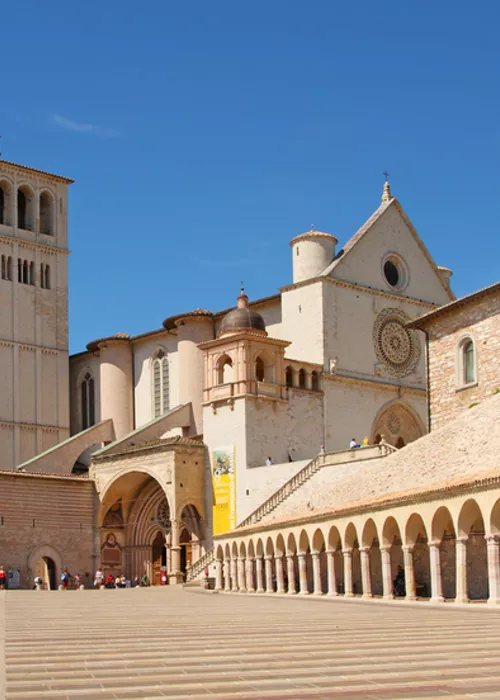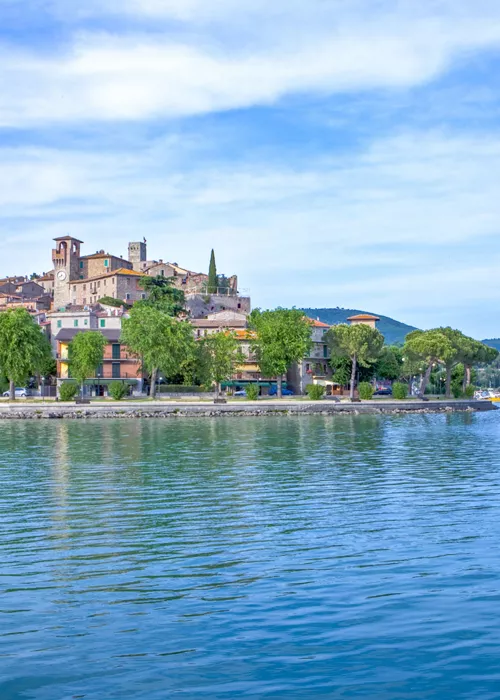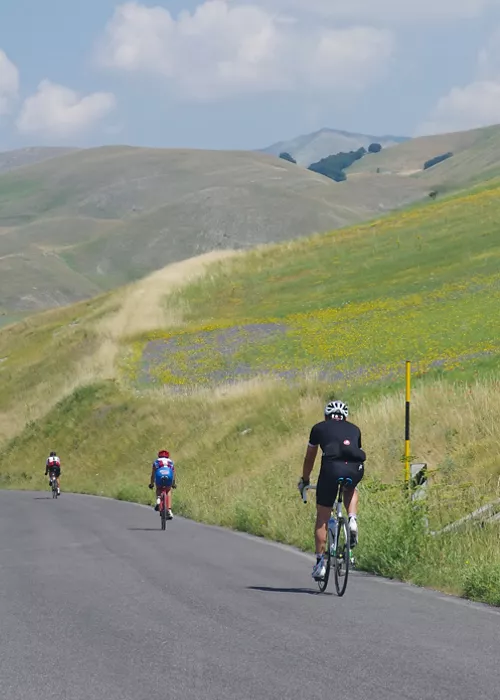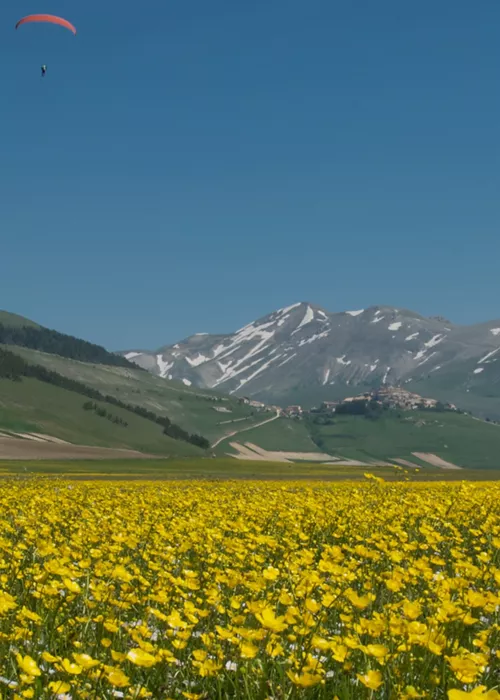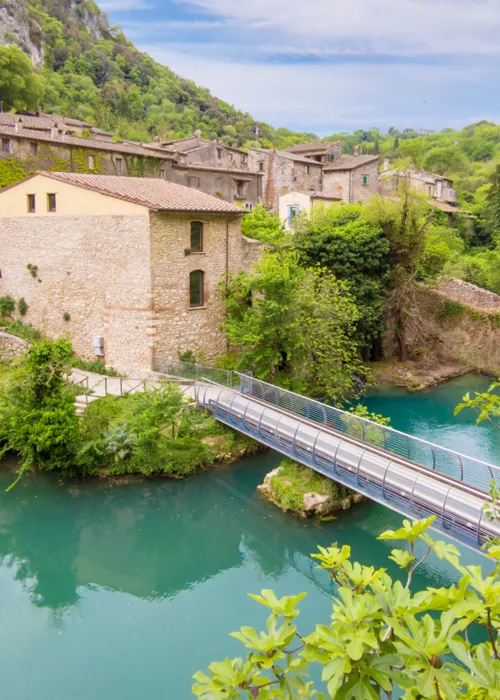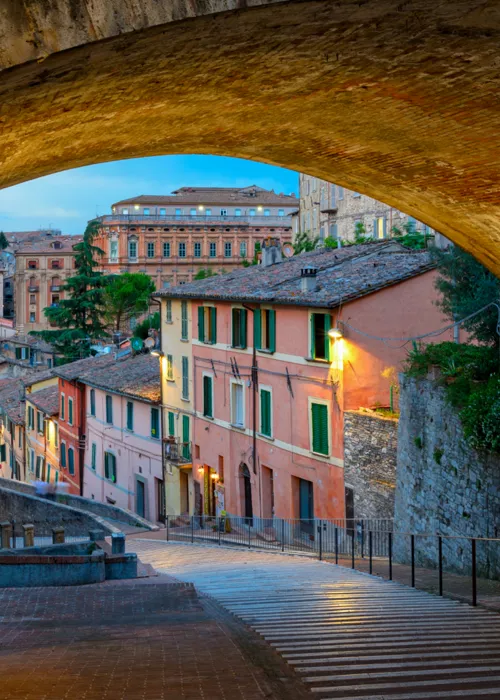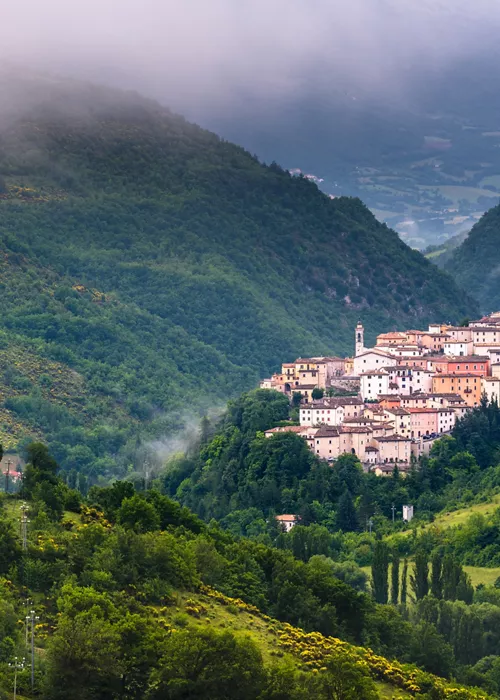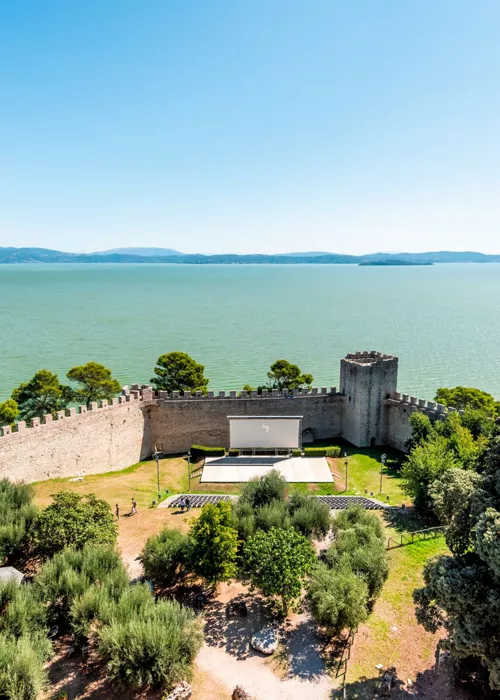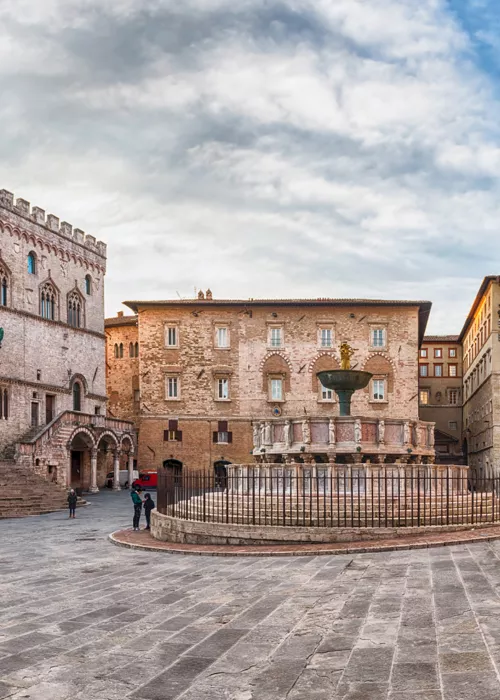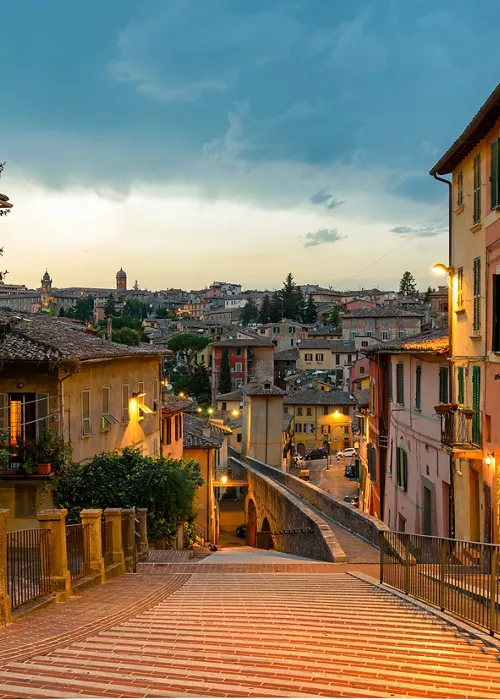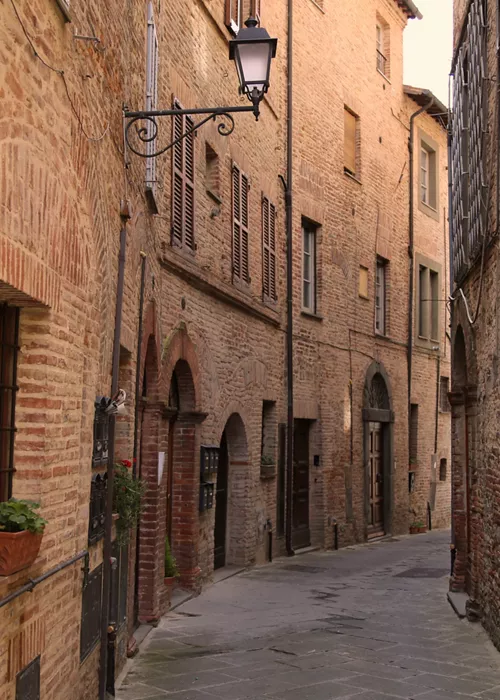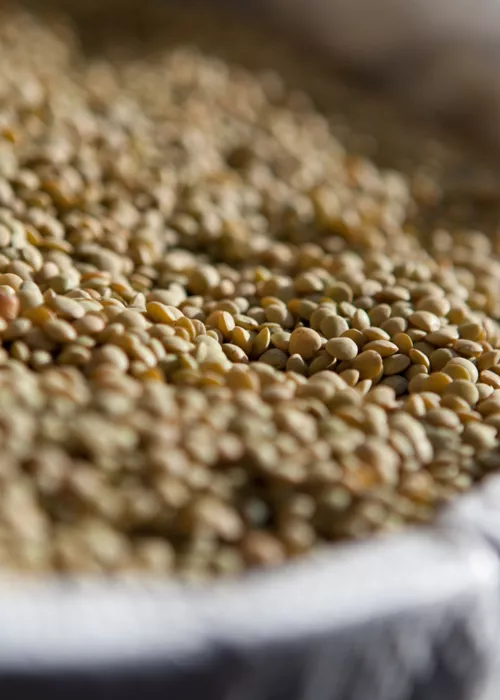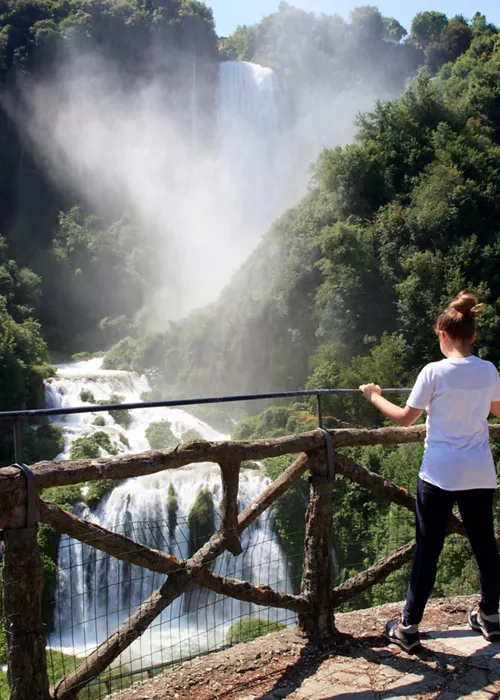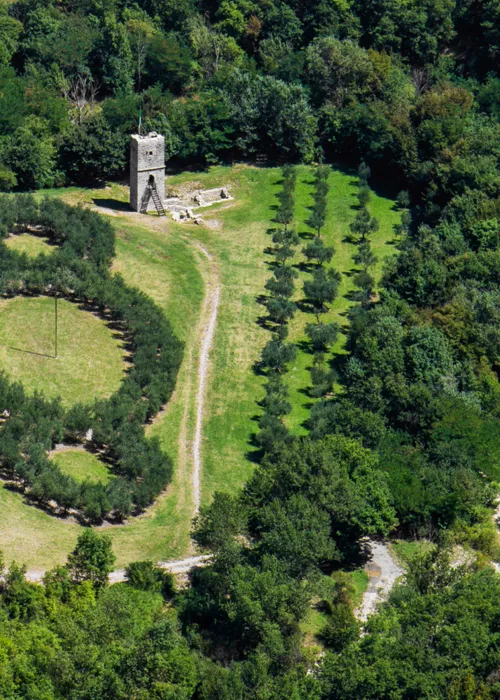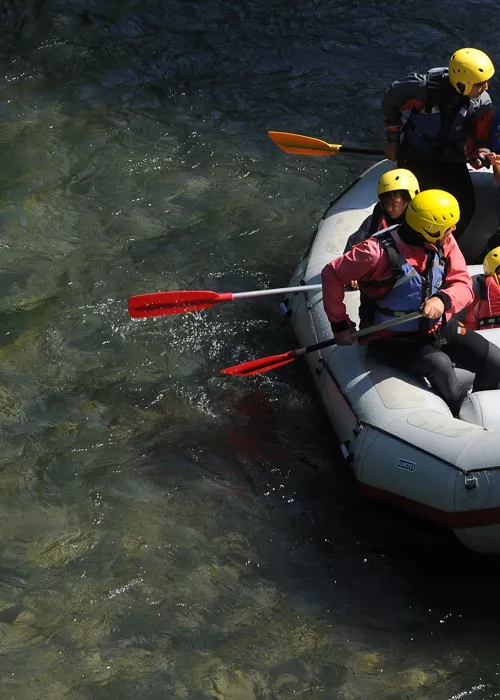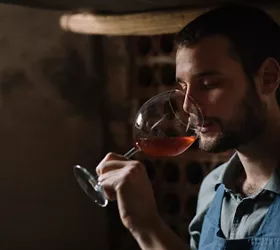A day in Gubbio, the stone city of Umbria
It is known as the "city of stone" and stands on the flank of Mount Ingino: Gubbio will win you over at first sight with its medieval charm waiting to be discovered in its labyrinth of alleys and narrow streets.
Gubbio's long history
The origins of Gubbio are rooted in the ancient Umbrian civilization, as witnessed by the "Eugubine Tablets" written in the Umbrian language and dating back to the 3rd–1st century BC. You can admire them in the rooms of the Civic Museum in Palazzo dei Consoli.
Gubbio's golden age began in around the year 1000, at the time of the Communes. Under the leadership of Bishop Ubaldo, in 1100, the city won a war against Perugia. In the meantime, arts and crafts flourished, including the processing of majolica. By the 1300s, the city took on the form it still has today. Some of the most beautiful buildings in Gubbio date back to that period.
A stroll downtown
Start your tour from the jewel of Gubbio, Piazza Grande or Piazza della Signoria, a "hanging" square overlooking the city. On its sides are the city's public palaces: Palazzo dei Consoli in the Gothic style and Palazzo Pretorio, one opposite the other. Also take a look at the Palazzo Ranghiasci Brancaleoni, which is located on the same square.
A stone's throw away is the Renaissance-style Ducal Palace. From the gardens of the Ducal Palace, you have a beautiful view of the city. Pay attention to the tall, narrow door at the side of the large gate: it is the Dead Man's Door. According to legend, the coffins of the dead passed through here. Along the walls, which are located just above the palace and date back to 1200, are six gates, some of which are still decorated with paintings and city coats of arms.
Among the churches, you should not miss the cathedral of Saints Mariano and Giacomo. Also worth a visit is the church of San Francesco, built on the land of the ancient Spadalonga family who would have welcomed him after he left his father's house and all his possessions. It is located at the foot of the city, where in the Middle Ages the market was held, and there is still the very long Loggia dei Tiratori, built in 1600 by the weavers' guild. Here is where they used to drape their freshly woven woollen cloths.
However, the true wonder of Gubbio is the Fontana dei Matti in front of the Palazzo del Bargello. Anyone can obtain a madman's licence by making three laps around the fountain and getting wet in the presence of a Gubbio resident to certify it.
Where to visit nearby
Just step outside Gubbio's medieval walls and another world of surprises unfolds for you to discover: the Roman theatre, the Roman mausoleum not far away, the Abbey of San Secondo, the seventeenth-century Madonna del Prato rich in stucco and the Church of Vittorina built in the very spot where, according to legend, San Francesco met the wolf.
The Gola del Bottaccione gorge
Near Gubbio can be found the Gola del Bottaccione gorge, ideal for a trip just outside the city. It is a deep gorge caused by the erosion of the Carmignano stream, but it is also rich in historical evidence. There is an aqueduct here that runs along the gorge and dates back to the Middle Ages.
In the gorge, there is also the Monastery of Sant'Ambrogio, which stands near a prehistoric citadel dating back to the Paleolithic. The hermitage dates back to 1300 and was known for its strict rules as well as the inaccessible position that guaranteed silence and solitude. Don't miss the visit, starting with the underground caves and ending with the church frescoes.
At the top of Mount Ingino: the Basilica of Sant'Ubaldo
The Basilica of Sant'Ubaldo is located right at the top of the mountain that watches over Gubbio, but don't worry, if you don't feel up to hiking, you can reach it by a comfortable cable car and have the whole town at your feet. Here, the urn is kept with the body of Sant'Ubaldo, patron saint of Gubbio. And there is also the famous race of the Ceri Festival on 15 May.
The church is of medieval origin, but during the 1500s it was enlarged with the addition of the convent and cloister. Don't be fooled by the simplicity of the exterior, step inside to admire the richness of the five naves and the stained glass windows that tell the life of Saint Ubaldo.




